On Sunday morning, Sept. 18, I had the chance to sit down with Neil Hadley, the general manager heading up the global export team at Australia’s Wakefield (Taylors) Wines.
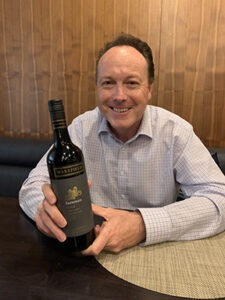
Neil Hadley, Master of Wine and Export Manager for Wakefield Wines, poses with arguably the winery’s best value—its Jaraman Shiraz.
I’d last seen Neil in May 2019 at the Toronto launch of Wakefield’s The Legacy, a $1,000 top-of-the-food-chain, limited-production 2014 Cabernet Sauvignon.
Neil was back in Toronto for an intimate trade/media event to promote the The Legacy’s 2015 vintage, as well as the rest of the winery’s luxury portfolio as part of its inaugural Family Flagship Release. Each of these seven elite wines is exclusively available here in Canada through Wakefield’s local agent, North York-based Profile Wine Group.
I was a little late to the meeting, thanks to some GO Train mechanical issues on the Oakville-to-Union Station line, while Neil was a tad delayed due to some plumbing issues in his hotel room that threatened to create a small waterfall at One King West.
But our meeting was worth the wait, for it’s hard to find a more affable and well-versed enological expert than Hadley, one of just 498 people to ever achieve Masters of Wine (MW) status. To put it in perspective, there are 60 more people who have achieved earth orbit than have earned their MW certificate.
But you don’t have to be an expert to appreciate the quality of wine that Wakefield (known as Taylors in Australia and New Zealand) consistently produces for the price. Consider its 2020 Estate Shiraz, which earlier this month was awarded top prize as International Champion (while also claiming Best Australian Wine honours) at the annual Vinus Wine & Spirits Competition in Argentina. Note that this is a bottle that was just included on TheLushLife’s annual best-value guide and which retails for just $19.95 at the LCBO!
Ted McIntyre: You’ve racked up a pile of international medals this year, Neil, but you must be especially proud of this one.
Neil Hadley: Our chief winemaker, Adam Eggins, was very pleased. It’s what prompted him to comment over dinner in London recently that making top-end wine is easy, but producing consistent quality in your entry-level and middle-range wines is much more difficult—and therefore more rewarding. Adam is underselling himself as far as his top-end wines go, but you get the point. When someone comes out and says, ‘This is the best wine in Australia,’ you’ve got to be pretty happy about it. Australians love that sort of stuff. It was all over the country’s mainstream television news.
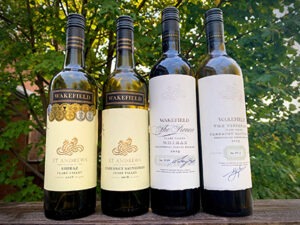 You have a trickle-down approach to winemaking at Wakefield that contributes significantly to the higher quality of those mid-range products.
You have a trickle-down approach to winemaking at Wakefield that contributes significantly to the higher quality of those mid-range products.
The general idea with our premium wines is a trickle-down process that allows the qualities from the very top of our range to flow through into all the levels below. In any given year we are going to make about twice as much of a given wine that we ever intend to bottle and sell, which gives Adam and our winemaking team complete latitude to select the very best barrels in making that final blend. What they don’t choose for that wine then flows down—for example, from our Visionary tier to our St. Andrews range, and from St. Andrews to what is now our Masterstroke range, making use of the bespoke parcels from our Coonawarra, McLaren Vale and Clare Valley vineyards. That, in turn, runs down into our Jaraman tier and, ultimately, into our Estate and entry-level Promised Land tier.
One of the Wakefield family members, Justin Taylor, told me that he considers your Jaraman series, which is $25 a bottle here, to be the most underpriced wine in your portfolio.
Jaraman would also be my instinctive response. In terms of a sweet spot of sheer value for what you’d expect people to pay, that range lands on the bullseye.
You produce a high volume of those entry and mid-range wines. Exactly what are the overall annual numbers?
In 2007, just before the global financial crisis, the Taylor family decided to double the capacity of the winery to about 1 million 9-litre cases. We’re making just over 900,000 9L cases for the world right now, about 70% of which stays in Australia, with the rest going overseas. Current sales are a little less than that 900,000, though, as Taylors is building stock since they intend to expand. At the moment’s we’re in modest growth, but we’re looking for relationships with major retail operators. We do very well here in Canada since the LCBO and British Columbia are already big fans of our wines. But down in the U.S., we’re having some interesting conversations with some big players.
You’ve just been to Singapore and London for other international launches of the latest edition of your luxury portfolio. Is there a concerted effort to really establish yourself as a producer of elite-level wines?
I just spent the last 10 days with Adam Eggins, our chief winemaker, touring in Burgundy and Bordeaux—exploring winemaking and maturation techniques, visiting cooperages, visiting some of the top houses of those regions and speaking with the winemakers. Adam has the view that there is no wine on earth that could not be made better. For us, that leads to internal planning papers on what we can do in the vineyard, at various picking points, in the maturation of wines and the oak regimes—even the marketing and communication of the wines as well. A focus of the business is to take these jewels that we have and make sure they are fully polished.
So what did you discover during those 10 days in France that will help in that goal?
Adam has written a five page paper on things he wants us to do based on what we saw from the journey. At Louis Latour, we met with the production manager, the winemaker of the top end of their portfolio and the general group winemaker, and then had a very comprehensive tasting. We also visited the Louis Latour cooperage, the barrels of which are central to our Chardonnay program. And the next day we went to a small producer in Savigny-lès-Beaune. In Bordeaux, we visited Château Margaux and continued over to Château Pichon Baron in Pauillac.
The whole purpose of the journey was to really investigate trigger points in winemaking thinking—our choice of coopers, maturation regimes, cellar temperatures and all sorts of things like that. We were struck at Latour by the utter lack of MOG (matter other than grapes) and the sheer purity of the fruit they were bringing in from the harvest. We do a fairly good job with our fruit, but there is definitely distance yet to be achieved there. We already have a plan in place for the next vintage to upgrade our harvesting equipment and take other steps there. But I think this journey gave Adam absolute resolve that he wants to expand our program so that we get the cleanest, purest fruit possible into the winery.
We were also struck—particularly in Bordeaux—by how much the wineries are embracing concrete and ceramic eggs (for aging wine). We figured out that between 5% and 10% of their wines are being matured without oak barrel influence. That means they have a component that has real fruit brightness and purity within their total blending options for their final grand vin. Adam has come away thinking that would it be pretty cool—particularly in vintages that are hot and more tannic—to have something that has that clarity and brightness of fruit that he can drop into the centre of the wine.
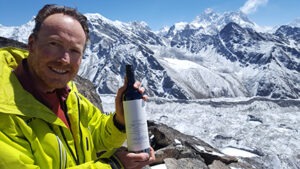
Hadley’s promotional travels have taken him from Kenya to the Himalayas.
Speaking of travels, you’ve gotten around in recent years in spreading the word about The Pioneer Shiraz.
I did a series of four vintages of The Pioneer, tasting them in exotic locations on holidays a few years ago. Up in the Himalayas, in Kenya’s Amboseli National Park (complete with an obliging elephant as co-star), temple-hopping in Japan, and (unsuccessfully due to the fierce wind disruption) in the Snowy Mountains in New South Wales, Australia. I’ve always thought these were the most fun I ever had in promoting the idea of excellence as a journey, not a destination.
Speaking of promoting excellence, you just released the 2015 Legacy. How are the 1,080 bottles you released of the 2014 vintage selling?
They were selling nicely, but were heavily loaded into two places: duty-free and China. So then with the change in relations between China and Australia, sales in China stopped abruptly, since they put the duty up to a silly level. And then with the pandemic, travel stopped. We were 3/4 of the way through selling the 2014 release at those points, and then the last quarter of sales has trickled out over the past 2 1/2 years. But we were fine delaying the release of the 2015 vintage anyway, since The Legacy is designed to go for 20 years.
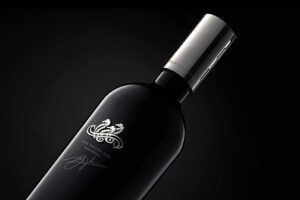
The Legacy’s unique tamper-proof seal, which can help alert the winery when a bottle has been opened through a satellite signal, was designed to prevent the possibility of the wine being counterfeited.
What’s the difference between the two Legacy vintages?
I find the ’14 to be very beautiful, very complete now. It seems to be evolving relatively rapidly. I think by the time it’s 10 or 12 years old it will have reached its top state of openness. How long it stays at the top is anyone’s guess. The 2015 seems a lot more reserved—at one level it’s a bigger wine, but also a tighter wine, so it will take longer to reach its peak.
So how do you justify a $1,000 wine?
There’s a fine line in all winemaking between scarcity and demand. That’s part of the equation. But in order to justify demand you have to be producing something special in the first place. So from the ground up, there is a focus on understanding which vineyard blocks, particularly of our Cabernet Sauvignon, are going to be giving us the fruit for the major part of The Legacy blend. Then managing those blocks to reduce yields. Your costs remain fixed, but obviously the more you reduce yields, the more your total cost per litre goes up. You’re then into a program of maturation, where the wines are being taken through the very best of our barrel program. And just like you going into the LCBO and selecting a $15 wine versus a $25 wine versus a $50 wine, not all barrels are the same either. There are the Rolls-Royces of barrels, and that adds significant cost. The wine then stays in barrels for an unfettered double maturation period. So The Legacy goes through from one barrel, which is very expensive, to our final selection of blending with the Merlot and Cabernet Franc components. It then goes back into new barrels for further maturation, which adds more cost. And then there’s the time-value element, in that the longer you hold onto something, the more it costs you as a producer to do so. And that is in a country where we get taxed on the wine at the vintage, so we pay the tax upfront and only sell through several years later.
So there are many drivers that lead to the overall cost of the wine. Theoretically, if you could afford to, you would go through this process for all of your wines. But, of course, you can’t. So you have to narrow your application of those sorts of exacting standards to only the very best, and that drives scarcity, which drives demand. And then ultimately the marketplace tells you if your price is OK or not. Because if it wasn’t, they wouldn’t buy it.
WAKEFIELD’S LUXURY PORTFOLIO
(I was able to sample four of the reds below, and have included my tasting notes and wine ratings for each of that foursome.)
 St. Andrews Riesling 2022 ($29.95) — Clare Valley, Australia
St. Andrews Riesling 2022 ($29.95) — Clare Valley, Australia
Winery notes: “The wine displays zesty lemon and lime aromas along with faint orange blossom aromas. The wine is quite restrained at release with a linear focus to the palate and purity of fruit flavours. Plenty of fresh lemon/lime juice characters abound with crisp and refreshing lime acidity down the mid-palate. All this is complemented by a persistent and refreshing finish.”
Neil’s pairing:“Oysters is the first thing that springs to mind, if you like shellfish. I personally don’t, so I love anything with a bit of ginger or chili. Riesling really sets off those hot spice flavours.”
 St. Andrews Chardonnay 2019 ($29.95) — Clare Valley, Australia
St. Andrews Chardonnay 2019 ($29.95) — Clare Valley, Australia
Winery notes: “The wine has ripe white peach aromas along with hints of tropical fruit and subtle creamy oak. Enticing sweet spice and savoury cashew nut from the French oak add complexity to the bouquet. It is a medium-bodied yet sumptuous wine with an enjoyable creaminess to the mid-palate. Flavours of juicy white-fleshed stone fruit are evident along with cleansing citrus at the finish which has wonderful persistence and length from the use of quality French oak.
Neil’s pairing: “Lobster. A lot of people go with salmon. I’ve also had it paired with foie gras. I find chardonnay can struggle sometimes with oily fishes, whereas if you look at something fleshy like white fish or lobster, or chicken and pork, I think you get a much better match.”
 St. Andrews Shiraz 2018 ($59.95) — Clare Valley, Australia
St. Andrews Shiraz 2018 ($59.95) — Clare Valley, Australia
Ted’s notes: “The St. Andrews tier of wines was named after the Taylor family’s historic property first established in 1892. The 14.5% alcohol in this Shiraz is still a little hot. The nose, meanwhile, is an intense, concentrated black cherry, plum, blackcurrant and cassis, sprinkled with lavender and cedar chips. There’s an appealing mild tang on the palate, with that classic Shiraz bite tempered by its lush fruit. It really takes flight alongside a steak.” 93
Neil’s pairing: “The obvious choice is beef, but you can take it into hot spicy foods. It will stand up against Cajun foods, that sort of heat in spice.”
 St. Andrews Cabernet 2018 ($59.95) — Clare Valley, Australia
St. Andrews Cabernet 2018 ($59.95) — Clare Valley, Australia
Ted’s notes: A sublime mint cloak hovers atop dark fruit—primarily blackcurrant, with blackberry, cassis and oak-infused cedar all coming into play. More earthy blackcurrant follows on an elegant palate that is medium-full in body, with fine tannins providing some structural support for further cellaring. This is not your prototypical plush California Cabernet—it’s much more measured with a higher acidity in the balance. A wine meant for food pairing. 92
Neil’s pairing: “The classic match is lamb. They work so beautifully well together.”
 The Pioneer Shiraz 2015 ($199.95) — Clare Valley, Australia
The Pioneer Shiraz 2015 ($199.95) — Clare Valley, Australia
Ted’s notes: Succulent stuff here in the winery’s pinnacle Shiraz—a ripe black cherry/blackberry compote that’s so rich that it’s not initially clear you’re tasting an Australian Shiraz. But with proper decanting, it begins to unfurl, unveiling some of that telltale sweet spice and subtle herbs. On the palate, there’s layer after layer of richness, with blueberry and plum contributing to the dense fruit cocktail. Tannins are finely buffed. The finish goes on forever. There’s a good 10-15 years of further cellaring potential. Lord knows the fruit isn’t subsiding anytime soon. 94
Neil’s pairing: “It’s actually a much more elegant wine, so it doesn’t necessarily need something like a robustly beefy plate. So you can therefore take it into more interesting tomato-based vegetarian dishes, and Italian foods. I also recently had two delicious tapas meals in London that it would have been perfect with.”
 The Visionary Cabernet Sauvignon 2015 ($199.95) — Clare Valley, Australia
The Visionary Cabernet Sauvignon 2015 ($199.95) — Clare Valley, Australia
Ted’s notes: Ripe, rich, juicy black cherry/mulberry/blackberry jam. The fruit is concentrated and plush, the alcohol well integrated. It’s a Cabernet Sauvignon, so there are the expected tannins framing the wine, but they’re smooth-edged, making this finely polished effort quite drinkable now—albeit with another 15 years of cellar life, should you possess the patience. 94
Neil’s pairing: “I would struggle to move away from lamb, although hard cheeses, especially those with a bit of bite, also pair well.”
 The Legacy 2015 ($999.95) — Clare Valley/Coonawarra, Australia
The Legacy 2015 ($999.95) — Clare Valley/Coonawarra, Australia
Winery notes: “The wine has bold, lifted varietal aromas of cassis, mint, ripe black cherry, roast coffee beans and subtle aniseed. French oak maturation is evident with characters of cedar, nutmeg, cinnamon and cigar box adding to the wine’s overall allure. The wine has a long and generous palate with concentrated varietal flavours of black cherry and cassis fruit characters throughout with well-integrated fine-grained French oak nuances of cedar and tobacco. The wine also has a savoury edge running throughout the palate. The finish is long and persistent, which continues to tantalize the tastebuds well after the wine is gone.”
Neil’s pairing: “A second mortgage? Seriously, it’s a pretty special wine. If you were in a restaurant, you’d probably to be trying to match up against multiple dishes on the table. So this is perfect. Because of its complexity and nuance, there is something here for everyone. So I don’t struggle too much with pairing it with a particular dish.”
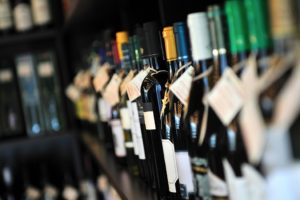
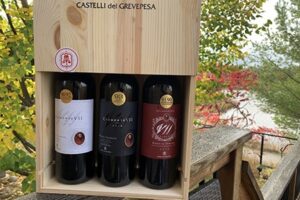
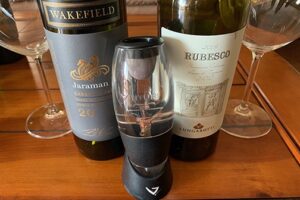
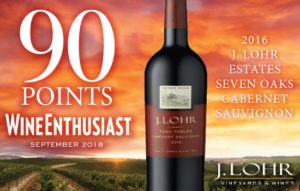
Leave a Reply
Your email is safe with us.